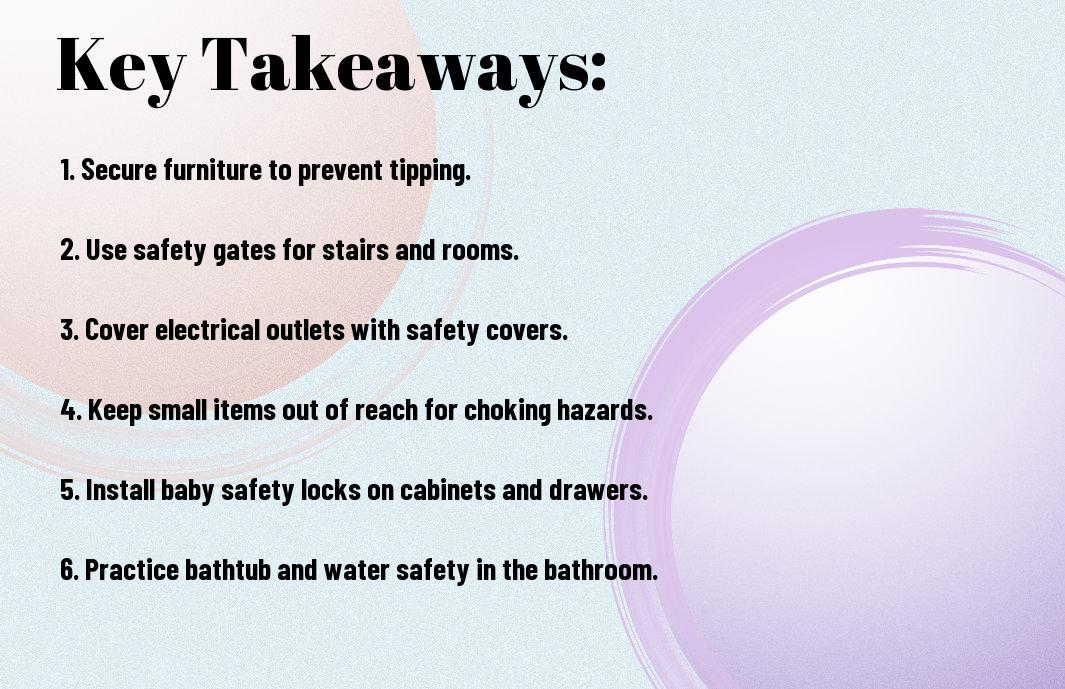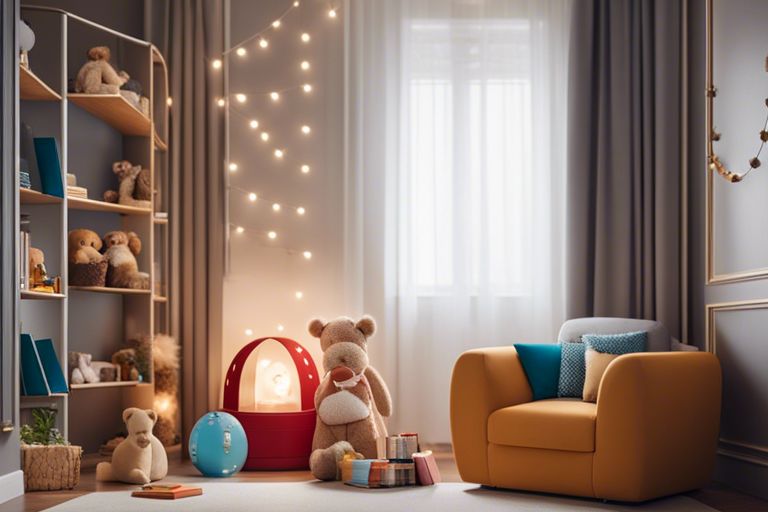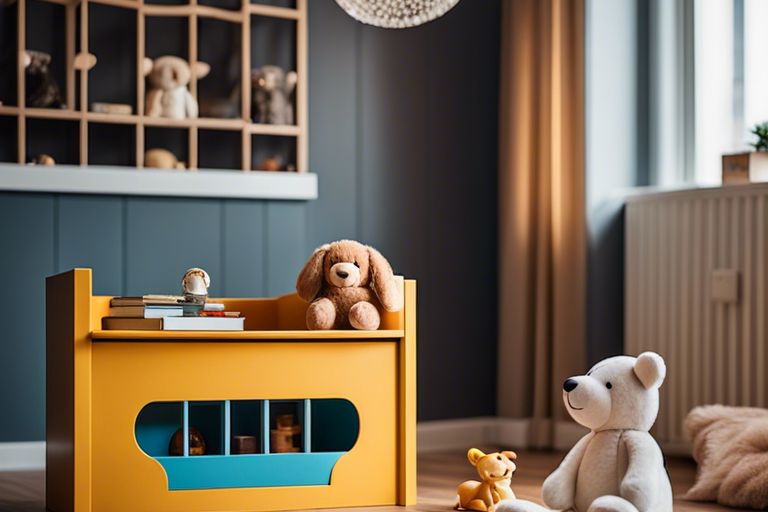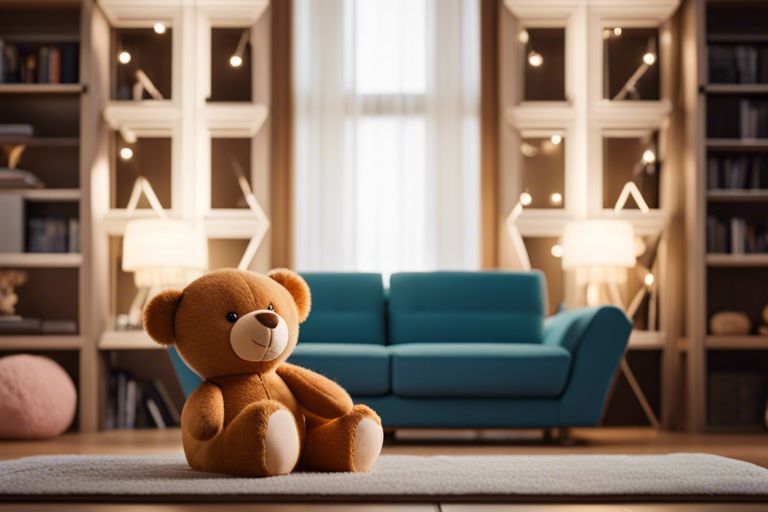Many parents may find themselves overwhelmed with the task of childproofing their home once their little one becomes mobile. To ensure the safety and well-being of your baby, it’s important to take steps to babyproof your house effectively. From covering electrical outlets to securing furniture and installing safety gates, there are many measures you can take to create a safe environment for your child. For a comprehensive babyproofing checklist, check out Your Ultimate Baby Proofing Checklist.

What Is Babyproofing?
Identifying Safety Hazards
Before your baby becomes more mobile, it’s crucial to identify and address safety hazards in your home. Babies can’t recognize dangers like hot stoves or sharp objects, so as a caregiver, it’s your responsibility to make the environment safe for them. Babyproofing involves taking steps to prevent accidents and create a secure space for your little one.
Creating a Safe Environment
Safety is the key to successful babyproofing. By creating a safe environment, you can help prevent accidents and ensure your baby’s well-being. From installing smoke and carbon monoxide detectors to covering electrical outlets and securing furniture, every step counts in creating a secure home for your child.
To effectively create a safe environment for your baby, it’s important to anticipate potential hazards and take proactive measures to address them. By understanding your baby’s developmental stages and being aware of common risks in the home, you can implement necessary precautions to keep your little one safe.
When to Babyproof Your Home
During Pregnancy
Any expectant parent can begin preparing their home for a baby’s arrival during pregnancy. It’s wise to start early, as anticipation grows alongside your baby’s development. By identifying potential hazards and addressing them proactively, you can create a safe environment for your little one before they even start exploring.
After Birth
The arrival of your baby signals the need to start the babyproofing process if you haven’t already. Once your baby starts to move about independently, it’s crucial to take additional measures to ensure their safety. Addressing potential dangers and hazards in your home becomes even more pressing as your child becomes more active.
As Your Baby Grows
For parents, the stages of a baby’s development bring with them new safety challenges. As your baby grows and becomes more curious and mobile, it’s important to continuously evaluate and update your babyproofing measures. Anticipating your child’s evolving abilities and adjusting your home environment accordingly will help keep them safe as they explore the world around them.

How to Babyproof Your House
All parents want to keep their little ones safe as they explore their surroundings. Room-by-room babyproofing is imperative to create a secure environment for your baby. To start, here are some general safety tips and a checklist to guide you.
Room-by-Room Babyproofing
To ensure your baby’s safety, childproof your home one room at a time. Cover electrical outlets, install safety gates, secure furniture, and remove choking hazards. Anticipate your child’s movements and curiosity to prevent accidents.
General Safety Tips
Babyproof your home by installing smoke and carbon monoxide detectors, covering electrical outlets, and securing furniture. Remember to store batteries away and remove choking hazards from your little one’s reach. The safety of your child is a continuous process, so be diligent in your efforts to create a safe environment.
- Install smoke and carbon monoxide detectors throughout your home.
- Cover electrical outlets and keep cords out of sight.
- Secure furniture to prevent tipping.
House
When preparing for your baby’s arrival, it’s crucial to babyproof your home to prevent accidents and ensure their safety. By following these room-by-room babyproofing tips and general safety guidelines, you can create a secure environment for your little one to explore and grow.
Babyproofing the Nursery
Crib Safety
The crib is where your baby spends a lot of time unattended, so it’s vital to ensure it’s a safe sleep environment. Remove soft materials like bumpers and pillows, as they increase the risk of suffocation. Ensure the crib meets safety standards, with slats no more than 2 3/8 inches apart, and use a firm mattress.
Bed Safety
Any child who can climb out of their crib should move to a low bed or a mattress on the floor. If you have bunk beds, children under 6 years should not sleep on the top bunk. Safety precautions include using beds with guards and ensuring children cannot fall off.
Safety straps can be used during changing, but avoid leaving your baby unattended on the table. Diapers and supplies should be within reach but out of the child’s grasp.
Changing Table Safety
The changing table should be sturdy with guardrails on all sides. Use a changing pad with a concave middle and keep one hand on your baby at all times. Store diapers and supplies close but out of reach.
Toy Box Safety
Changing your little one in the nursery means making sure they won’t get stuck or injured in a toy box. Use a toy box or basket without a lid to prevent trapping and explore alternative storage solutions for toys.

Babyproofing the Kitchen
Store Sharp Objects
To prevent accidents, store sharp utensils and appliances out of reach. Keep knives, scissors, and food processors in drawers with safety latches.
Use Door Latches
For added safety, use door latches on cabinets containing risky items. This will keep cleaning products, medications, and breakable objects out of your child’s reach.
For instance, babyproofing cabinets with door latches can help prevent your little one from accessing harmful substances such as cleaning products or medications.
Safeguard the Stove
To protect your child, consider using knob covers on the stove to prevent them from turning the gas knobs. Additionally, always keep hot pots and pans out of reach.
Door knob covers are a great way to safeguard your child from turning on the stove accidentally, reducing the risk of burns or accidents in the kitchen.
Unplug Appliances
Safeguard your child by unplugging appliances when not in use. Store cords out of reach to prevent any potential accidents.
Always unplug appliances when not in use and keep cords out of reach to ensure your child’s safety in the kitchen.
Babyproofing the Bathroom
Install Cabinet Locks
Despite the bathroom being a place of cleanliness, it can also pose risks to your little one. With cabinet locks, you can keep all dangerous items out of reach, ensuring your child’s safety.
Practice Bathtub and Water Safety
Install non-slip pads in the bathtub and use a cushioned cover over the faucet to prevent accidents. Always supervise your child in the bath and test the water temperature before letting them in to ensure they stay safe.
Water safety is crucial, as even a few inches of water can pose a drowning risk to young children. Always be vigilant and never leave your little one unattended in the bath.
Close and/or Lock the Toilet
Babyproofing the toilet is crucial to prevent any accidental mishaps. By closing and locking the toilet lid, you can keep your curious toddler safe from potential hazards in the bathroom.
Close the toilet lid after use and consider using a lock to prevent your child from exploring this potentially dangerous area.

Babyproofing the Living Room
Cover Sharp Corners
Many accidents can be prevented by ensuring sharp corners in the living room are covered. An easy solution is to put corner guards on table edges and sharp surfaces to protect your little one from painful knocks and scrapes.
Use Cordless Window Coverings
An important safety measure to implement is using cordless window coverings in the living room. This can prevent your child from getting tangled in cords, reducing the risk of accidents. Make sure to wrap any cords around wall brackets or attach them to floor mounts for added safety.
Corners in the living room can be potential hazards for curious little explorers. By using corner guards on table edges and sharp surfaces, you can minimize the risk of bumps and injuries.
Screen the Fireplace
Fireplaces can be especially dangerous for young children, so it is necessary to screen them off to prevent any accidents. A fireplace screen provides a barrier between your child and the flames, ensuring their safety. Remember to never leave your child unattended in a room with a fire, and educate older children about the dangers of playing near fires.
Babyproofing Checklist
Now that you have learned about the important steps to babyproof your home, it’s time to put that knowledge into action with a handy babyproofing checklist. Bear in mind, the safety of your little one is your top priority, so it’s crucial to ensure that every corner of your home is safe and secure for them to explore.
Here is a downloadable babyproofing checklist that you can use as a guide to help you create a safe environment for your baby:
1. Install smoke and carbon monoxide detectors throughout your home. Check them monthly and replace batteries as needed.
2. Cover electrical outlets with protective covers to prevent your baby from sticking fingers or objects into them.
3. Install baby safety gates at the top and bottom of stairs, as well as in doorways to restrict access to certain areas.
4. Secure furniture to the walls to prevent tipping over.
5. Remove choking hazards from the floor and keep small objects out of reach of your baby.
6. Store batteries and small items that could be swallowed out of your baby’s reach.
7. Ensure the crib meets all safety standards, and keep it free of soft materials that could pose suffocation risks.
8. Use corner guards on sharp edges around the house to prevent injuries.
9. Secure cabinets and drawers containing dangerous items with safety latches.
10. Practice bathtub and water safety in the bathroom, never leaving your baby unattended in the bath.
By following this checklist and implementing the necessary babyproofing measures, you can create a safe and secure environment for your little one to explore and play in peace.
Final Words
Considering all points discussed in this comprehensive guide, it is clear that babyproofing your home is a crucial step in ensuring the safety and well-being of your little one. From securing furniture to covering electrical outlets, there are numerous measures you can take to create a safe environment for your child to explore. By following the tips and checklist provided, you can rest assured that you have taken the necessary steps to childproof your home effectively. Bear in mind, safety always comes first when it comes to parenting!
FAQ
Q: Why is childproofing important for a home with a baby?
A: Childproofing is crucial because it helps create a safe environment for your little one to explore without encountering potential hazards.
Q: When should I start childproofing my home?
A: It’s advisable to start childproofing before your baby becomes mobile, typically around the time they start crawling or pulling up to stand.
Q: What are some basic steps to childproof a home?
A: Basic steps include covering electrical outlets, installing safety gates, securing furniture, removing choking hazards, and storing batteries away.
Q: How can I babyproof the nursery?
A: Babyproof the nursery by ensuring the crib meets safety standards, using a low bed for older babies, securing the changing table, and using a toy box without a lid.
Q: How can I childproof the kitchen?
A: Childproof the kitchen by storing sharp objects out of reach, using door latches on cabinets, safeguarding the stove, and unplugging appliances when not in use.
Q: What precautions should I take in the bathroom with a baby?
A: Install cabinet locks, practice bathtub and water safety, and close or lock the toilet to prevent accidents in the bathroom.
Q: How can I babyproof the living room?
A: Babyproof the living room by covering sharp corners, using cordless window coverings, screening the fireplace, and ensuring furniture is stable.

1 thought on “How to childproof a home with a baby”
Comments are closed.